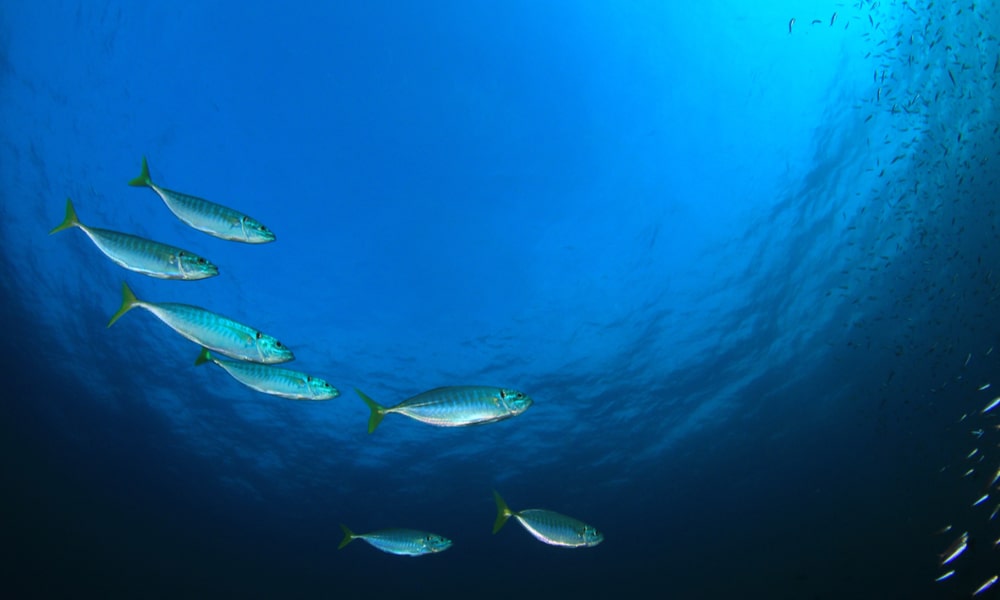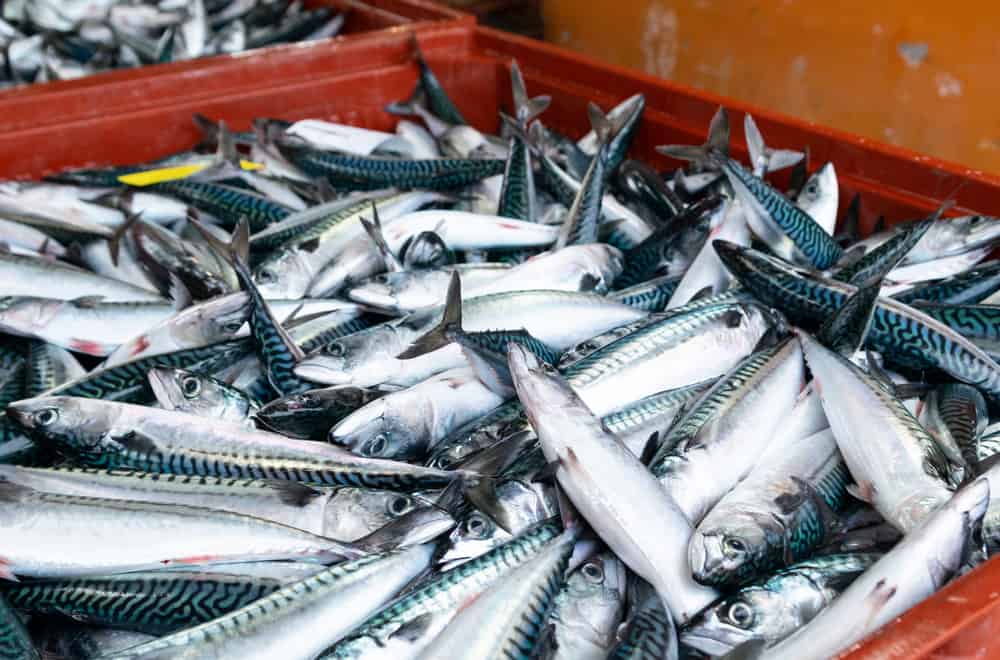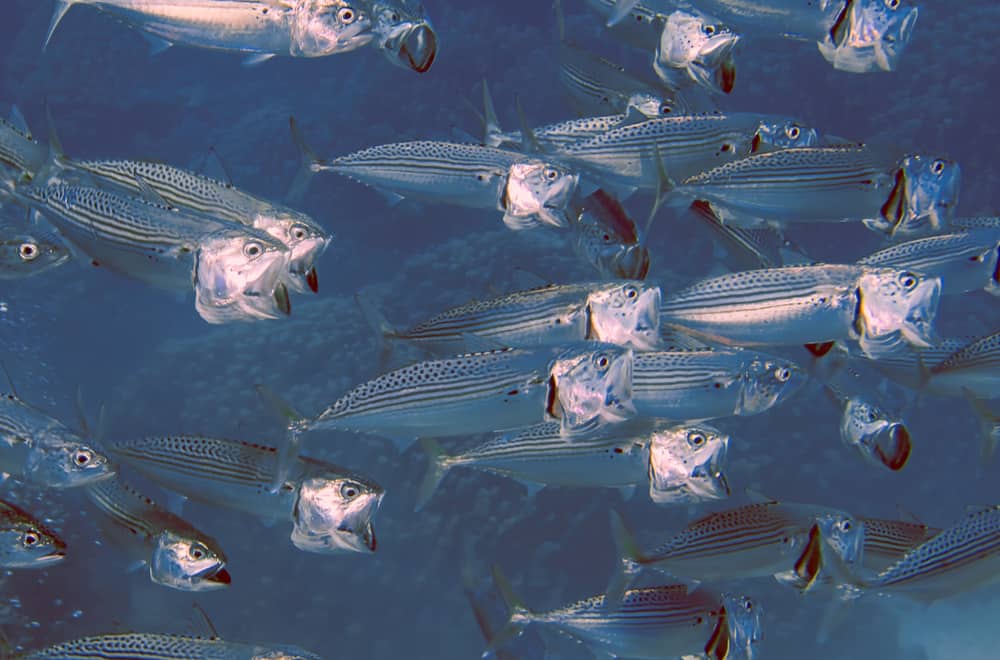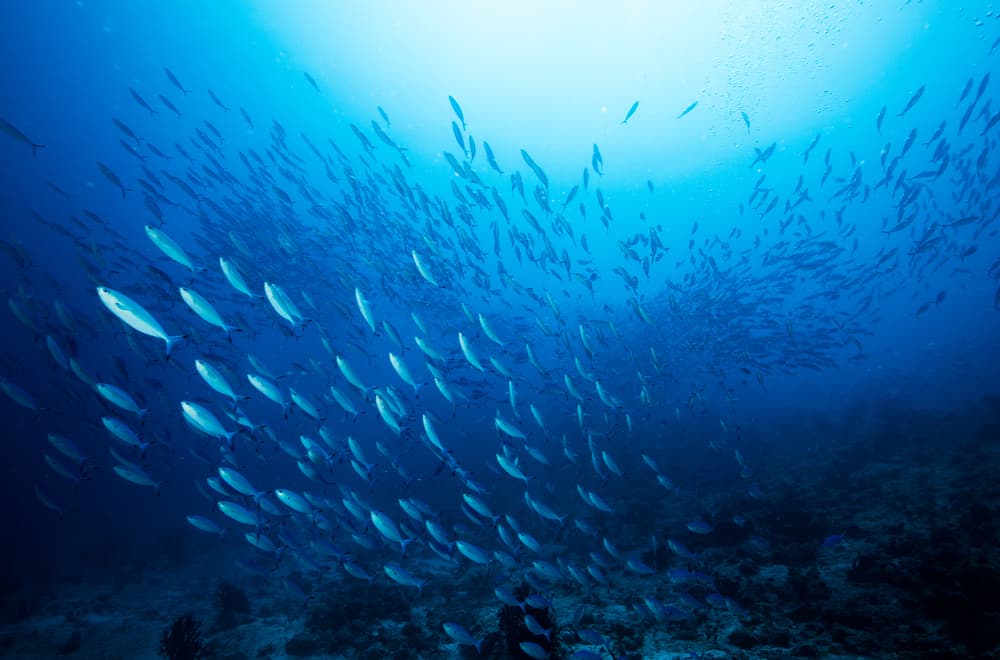Mackerels are an important part of our diet – they are rich in omega 3, fats, proteins, and vitamins that have been found to have quite a number of benefits to our bodies. But what do mackerels eat that equips them with all of these nutrients? Stay tuned, as we are about to find out.
Mackerel Habits and Biology
The mackerel is a group of swift-moving, streamlined fish commonly found in temperate and moderate waters. They belong to the Scombridae family that they share with dozens of other fish species like tunas and bonitos.
Because there are plenty of fish species in this category, it can be difficult to provide a specific description of their appearance. However, most fish considered to be mackerel have long, torpedo-shaped bodies that are very narrow around the tail. This helps them move smoothly through the water.
The colors and patterns vary from fish species to fish species but the majority have a silvery coloration with dark irregular stripes. They grow to different lengths and weights too, with most of them ranging between 8 inches and 24 inches long and weighing from 1 pound to 8 pounds.
Mackerels travel in large groups called schools that sometimes cover several miles. They tend to be in large numbers where water is warm, with most species residing in coastal areas near the shore.
Regardless of the many different species found in this family, all members live together in harmony. They live active lives, moving from one place to another in search of food. They form their schools based on fish sizes, with smaller fish schooling together and larger fish forming a separate school.
Breeding happens seasonally, and the time varies from one species to another. However, the majority of fish spawn around April and May, with a single female producing up to 500, 000 eggs at once. The males release sperm to fertilize the eggs after which the eggs float at the water’s surface until they are hatched into larval fish.
Predators of mackerel include humans, sharks, and dolphins. Humans catch the fish mostly for food and sport.
What Do Mackerels Eat in the Wild?
Mackerels are surface feeders and as we stated, they love to spend time in warmer waters. During summer, you will see large schools skimming just underneath the surface of the water looking for small fish.
When a school of mackerels comes across an area with small fish or any marine organisms that can fit into their mouths, they force them to the surface, making the water body look as if some of its sections are boiling.
And if you are wondering, these fish eat a lot. Sometimes they will not even close their mouth; they will swim through clouds of plankton with their mouths wide open and engulf little critters. The upside? All this eating makes their meat tasty, tender, and full of nutrients.
What Do Mackerels Like to Eat?
What fish in this group eat will depend on what is available in their habitat. However, the majority are carnivores and will prey on the following:
- Shrimps
- Copepods
- Squid
- Krill
- Sardines
- Detritus
- Anchovies
- Small crustaceans
- Fish eggs
- Plankton
How Mackerels’ Diet Benefits the Ecosystem
- As small pelagic fish feeding on plankton, mackerels play an important role in the overall marine food web because by preying on these marine organisms, they too become prey for higher-level aquatic animals like sea birds, marine mammals, and predatory fish.
- Feeding on planktonic organisms makes mackerel meat nutritious by increasing the level of fatty acids, proteins, omega 3, vitamin D, and selenium, all of which are beneficial to humans. The fatty acids improve endurance during exercise, proteins help build and repair body tissues, and omega 3 enhances brain function. In addition, vitamin D and selenium help create strong bones and fight antioxidants in the body respectively.
Facts About Mackerels
1. ‘Mackerel’ Originates from French
The word ‘mackerel’ is was coined from ‘maquerel’ an old French word meaning ‘spotted’ or ‘marked’. This term was used to describe the appearance of mackerels, as depending on the species, mackerels can have spots or vertical stripes on their bodies.
The Spanish mackerel, for instance, has spots on its body while the king mackerel and the majority of mackerels have sharp lateral lines. For the most part, however, different fish species in this family will have different patterns on their body, with some having both spots and lateral lines.
2. Mackerel is One of the Few Fish Species Without a Swim Bladder
Most fish species have a swim bladder to help them control their movements and stay stable in the water. When swimming upward, they will breathe in to fill the swim bladder with air so they can stay more buoyant and when swimming downward, they will do the opposite; they will let the air out of the swim bladder.
Mackerels lack swim bladders. Instead, they use passive gill ventilation whereby they swim with their mouths wide open and the gill chambers expanded. This allows water to flow through the gills and keep them afloat. As such, mackerels must swim constantly; if they stop moving, they will lose their buoyancy and sink!
3. Mackerels Are Fast Swimmers
With a streamlined body and highly forked tail, mackerels are built for speed. In fact, they are among the fastest swimming fish species in the US, able to swim up to 16 feet per second.
It is because of their fast and flexible swimming ability that they actually lack a swim bladder; the organ would not be able to keep up and adjust quickly to the swift vertical movements.
4. Some Females Can Breed When They Are Just a Year Old
The majority of mackerels mature at the age of three years and that’s when they start to spawn. However, some fish species considered mackerel have been found to spawn in just 12 months.
Like most females, they will lay 20 to 25 batches of eggs throughout the season. On average, they will shed around 500, 000 eggs but depending on the species and age, some can lay up to one million eggs.
5. Mackerels Do Not Make Good Pets
Mackerel is one of the most targeted fish species by anglers but it is caught mainly for food or spot; not for domestication.
Why, you may ask? Simply because mackerels are social animals. As we mentioned, they love to swim in large schools, which means anyone who wishes to domesticate them must have a large number to keep as pets.
Also, mackerels need to keep moving to stay alive, meaning, one must have an extensive aquarium with strong currents to accommodate their movements.
6. Not All Mackerels Are Good for Human Consumption
While there are over 30 species of mackerels, only a few are edible. The majority have high mercury content that can be harmful to humans.
Atlantic mackerel, Atlantic Spanish mackerel, and Atka mackerel, for instance, are fit for human consumption, as they have been found to have low mercury content and are rich in inflammation-fighting omega 3. But species like King mackerel should be consumed with caution, as they are high in mercury.
7. Mackerels Almost Became Extinct in the 80s and Are Still Being Overfished Today
Mackerels have been part of the human diet for years. In the 1980s, there was quite a high demand for mackerels, which caused extensive overfishing, leading to a catastrophic decline of this fish species in the ocean. It is estimated that the population of mackerels reduced by almost 80% during this period.
As a result, a law was put in place to regulated the fishing grounds for both recreational and commercial fishing, and it’s only then that the number of mackerels started to increase again. By 2001, the population had already returned to its original size.
Sadly, overfishing is still a problem today, with Atlantic mackerel being the most targeted. In fact, reports show that this specific type of fish has been overfished for over a decade. However, with the ongoing efforts to protect Atlantic mackerels by the Mid-Atlantic Fishery Management Council, this fish species may still be able to survive.
For instance, this council keeps track of weekly commercial catch in federal waters and closes fisheries if the set limit is reached before the end of the fishing season. It also requires all anglers to have a special permit to fish Atlantic mackerel. These measures are not just excellent at saving the current mackerel but also ensure that there will be enough supply of the fish in the future.
Summary
Like most fish species, mackerels often feed on what is readily available in their habitat. They love temperate and tropical waters and will travel in large schools looking for small fish, crustaceans, and fish eggs near the surface. However, being surface feeders is what makes them an easy target for anglers, which is why they are constantly being overfished.



